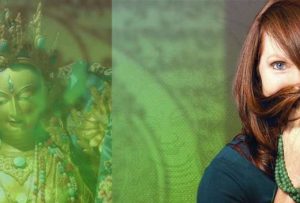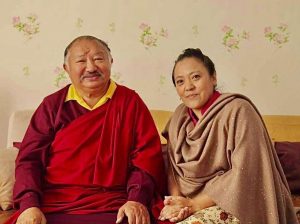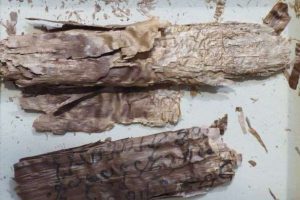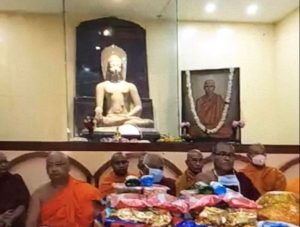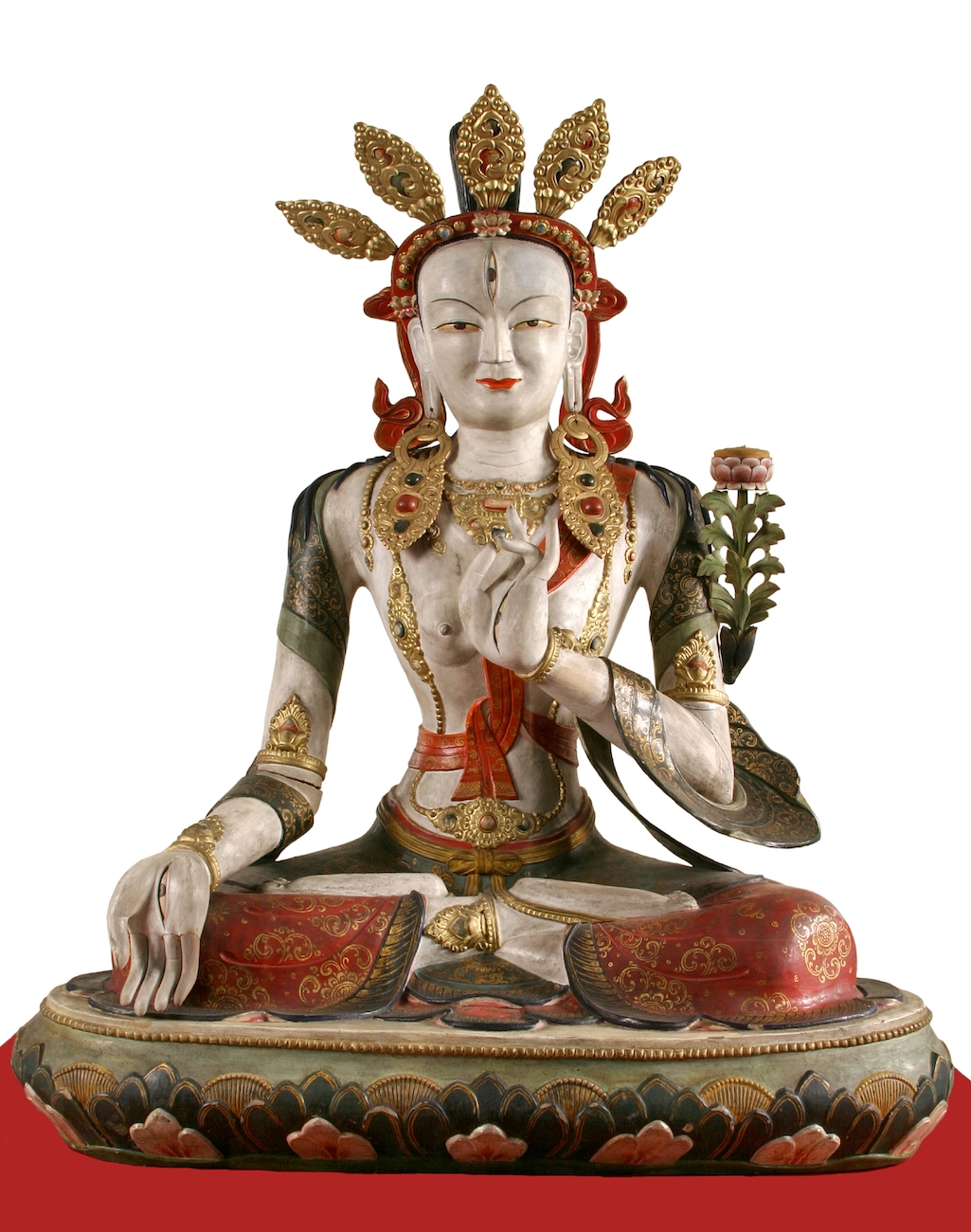
Museum of History of Buryatia
Aryuna Balzhurova is a scientific secretary for the National Museum of the Republic of Buryatia, Russia. She worked as a curator for the museum’s “Buddhism” collection from 2011–19, and was a curator of the unique exhibition “The Faces of the Goddesses: Female Deities in Buddhism as the Guardian of the Hearth,” presented from November 2018 to May 2019 at the Museum of History of Buryatia (named after the famous Buryat ethnographer M. Khangalov).*
Buddhistdoor Global interviewed Aryuna about her experiences in the field of Buddhist art and about the most popular Buddhist goddess in Buryatia.
Buddhistdoor Global: How did you become interested in Buddhist art?
Aryuna Balzhurova: As a student at the East Siberian State Academy of Culture and Arts in Ulan-Ude, I studied Buryat fine art. In the course of studying the works of contemporary artists, I noticed that the main archetypal leitmotif in most works are Buddhist motifs. Therefore, I additionally began to study Buddhist art, and the theme of my dissertation was “Buddhist Motifs in the Work of Contemporary Artists of Buryatia.”
After my graduation in 2004, I started work at the Museum of History of Buryatia, where I continued to engage in Buddhist art. Later, in 2015, I defended my thesis on the topic “Buryat Buddhist Icon Paintings of the Late 18th Century to the First Quarter of the 20th century (Based on the Materials of the Fund of the National Museum of the Republic of Buryatia).”
BDG: How did you decide to organize the exhibition “The Faces of the Goddess” and how was the response from audiences?
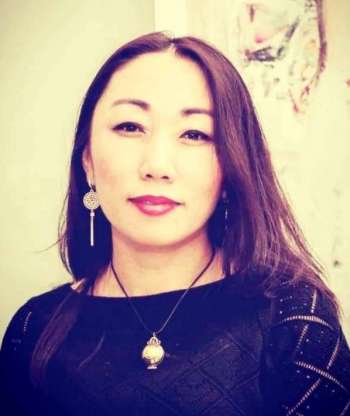
AB: Over the years, the museum has organized exhibition projects dedicated to the history of Buddhism in Buryatia, the history of the Institute of the Pandit Khambo Lama of Russia, and exhibitions representing Buddhist art in general.
In 2018, the idea came up for an exhibition dedicated to the image of one deity. Over the course of our research, we realized that we were keeping a unique collection of female Buddhist images to which we had not paid much attention before. A large number of artifacts were selected, but unfortunately not everything was on display due to a lack of exhibition space. More than 70 artworks were presented at the exhibition, among them Buddhist paintings from Tibet and Buryatia, sculptures made of metal, wood, and papier-mâché from China, Mongolia, and Buryatia, and rare Buddhist sutras, etc.
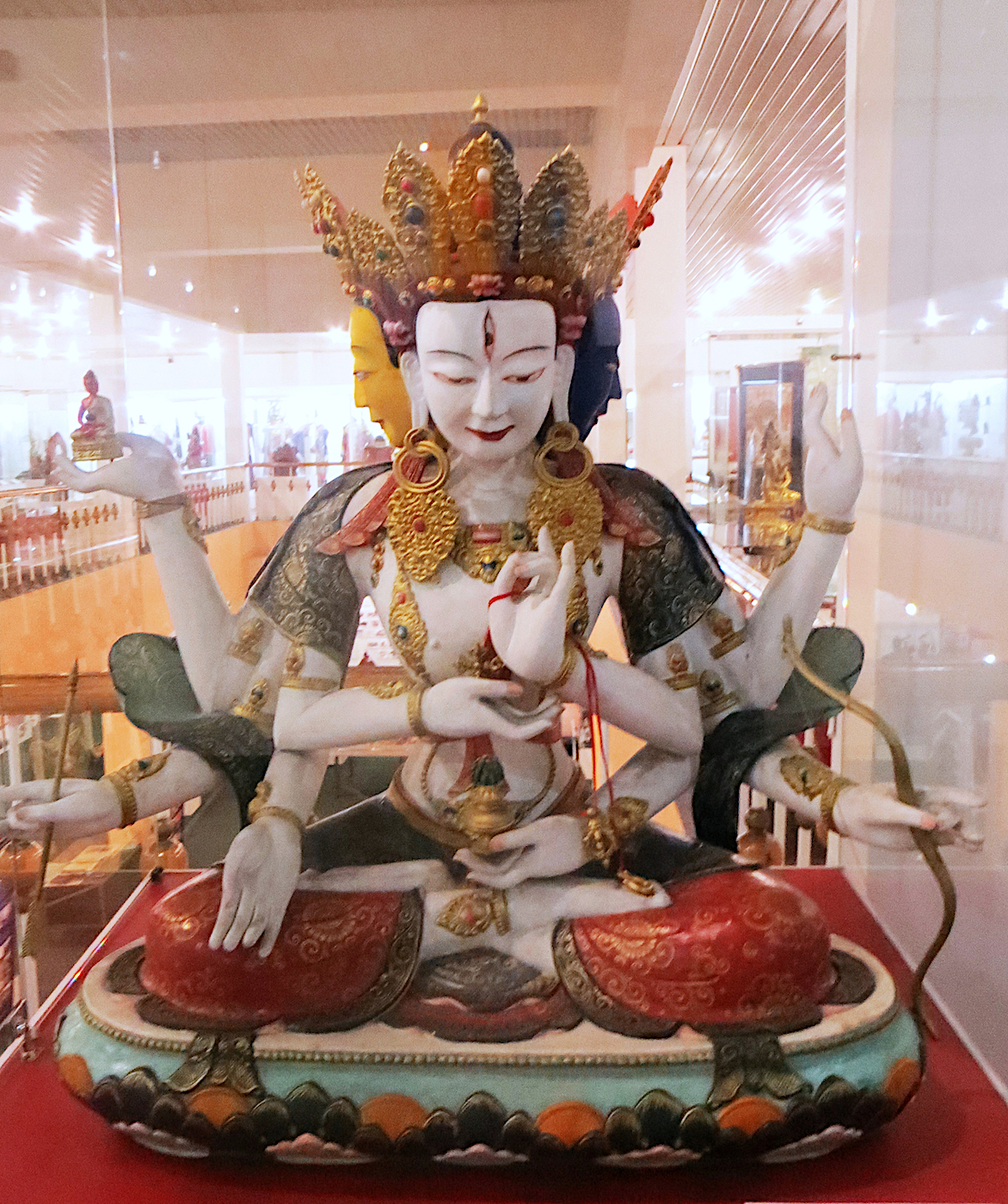
History of Buryatia. Image courtesy of the author
During preparations for the exhibition and the study of the iconography, it was noted that all the deities act as guardians of the family hearth, well-being, health, love, and compassion. People are invoking the goddesses, just looking their faces. That’s why we named the exhibition “The Faces of the Goddesses,” dedicated to these beautiful images of Buddhism.
The exhibition aroused great interest among a wide audience. It held thematic lectures and museum tours. During the celebration of Sagaalgan (Bur. White Month), the Buddhist New Year, usually celebrated in February according to the lunar calendar, master classes were held and art students painted images of the goddesses. Before closing, a special program for Buryat television, Buddhist Environment, dedicated to the female deities of Buddhism, was filmed at the exhibition.
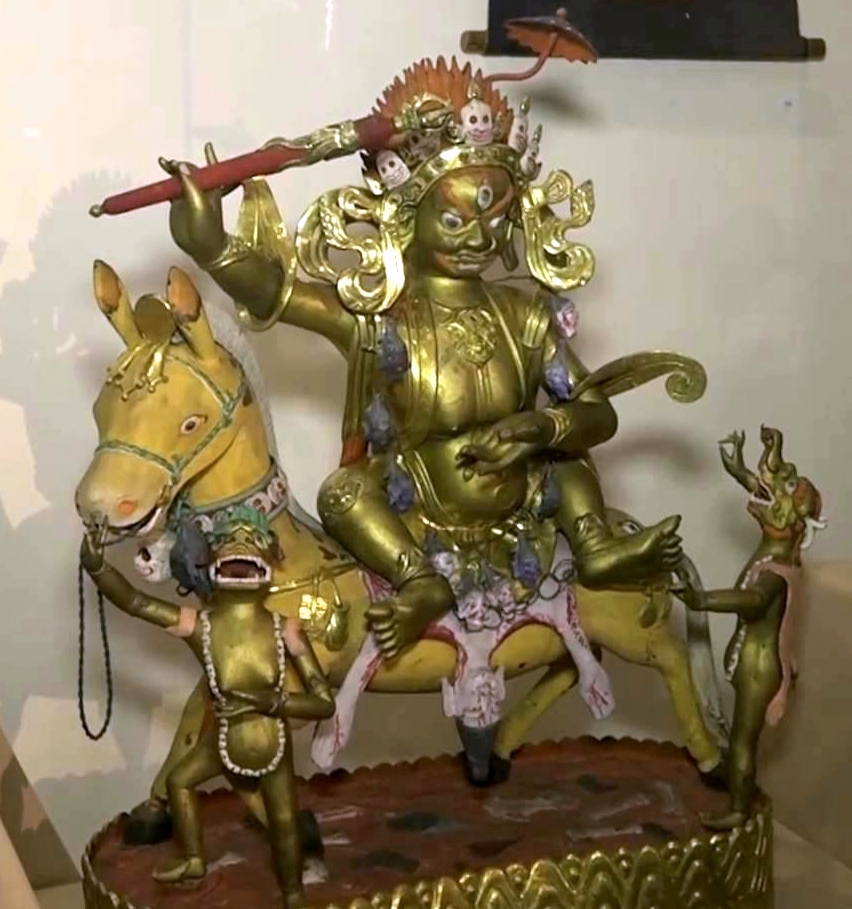
Female Deities in Buddhism as the Guardian of the Hearth.”
From facebook.com
BDG: Which is the most popular Buddhist goddess in Buryatia?
AB: For our region, one of the most popular goddesses, based on an analysis of the museum’s Buddhist collection, is Green Tara (Skt: Shyama Tara; Tib: Doljan; Bur: Nogoon Dara Ehe). According to legend, Tara, being a woman, attained enlightenment, but refused her own liberation in the name of other sentient beings. She made a promise to help rid all beings of suffering until the wheel of samsara becomes empty.
Green Tara, being the personification of knowledge, worldly wisdom, initiative, and creativity, is invoked to protect all who seek relief from misfortune and adversity. In the iconography, Green Tara appears as the image of a young girl in royal clothes and jewelry. She sits on a lotus throne and holds in her hands a long lotus stalk with a bud, flower, and seedpod. They symbolize the three states of time: past, present, and future. She sits in a half-lotus pose: one leg bent and the other lowered, so that Tara is ready to help at any moment.
The popularity of Green Tara among Buddhist followers is connected with her legendary ability to provide assistance and save people from various misfortunes, as well as to provide protection from untimely death. Every Buddhist in Buryatia knows her mantra om tare tu tare ture soha.

From facebook.com
In Buryatia, in addition to the single image of the goddess, other multi-story thangkas are also popular, such as Tara Who Protects from the Eight Great Fears and Tara from the Complex of Twenty-one Mother Liberators. The ancient Indian tradition of worshiping Tara Who Protects from the Eight Great Fears was developed in Tibet, Mongolia, Buryatia, and became a worship in the form of 21 Taras, each of which is endowed with a specific function. The iconography of the 21 forms of Green Tara is the epitome of the Praises to the Twenty-One Tara included in the Tara Tantra, where each image personifies a verse of the prayer.
The popularity of Tara, the savior, cannot be overestimated. Her cult goes back to the veneration of the mother goddess and the universal protectors. At a deep level, the sign of the protective hypostasis of the mother goddess is duality (in ancient art, its symbol is two curls), therefore it is natural that Tara is present, usually in both of her forms—white and green. She is the only deity in Tibetan Buddhism that is often depicted in two forms simultaneously.
BDG: What universal message is hidden behind the faces of the Buddhist goddesses?
AB: Buddhist goddesses are, first of all, associated with the image of the mother, therefore, their universal message, of course, is love and compassion for all living beings.
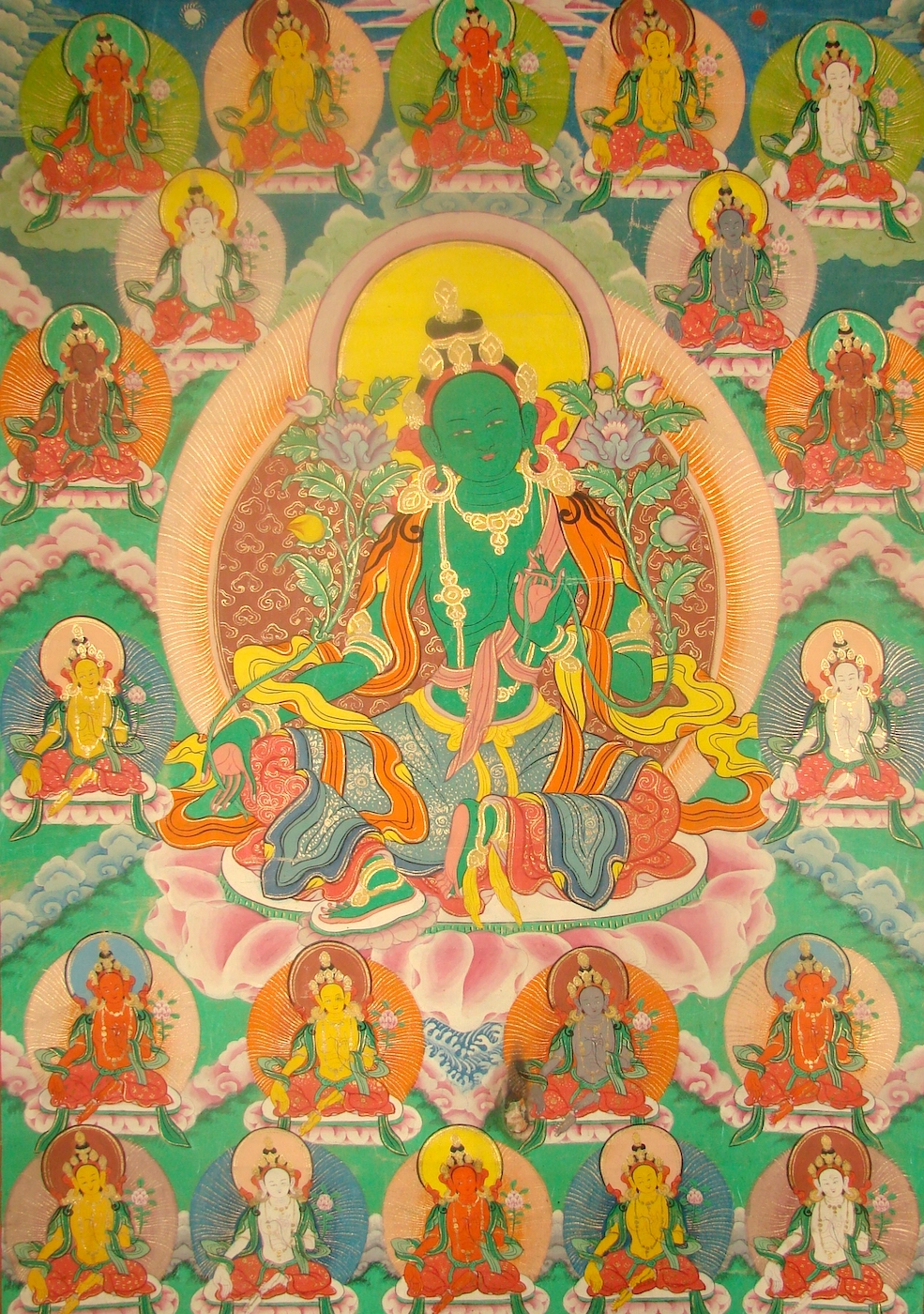
Image courtesy of the Museum of History of Buryatia
* The Museum of History of Buryatia is a branch of the National Museum of the Republic of Buryatia.







